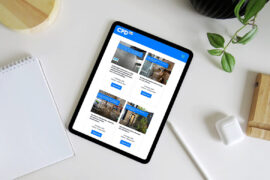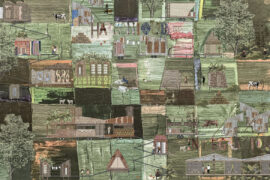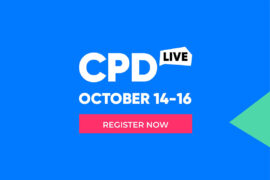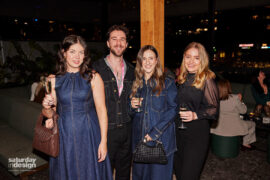As sustainability matures in the built environment, it’s no longer just about the tangible elements that can be deemed sustainable, increasingly social sustainability comes into play.

April 26th, 2018
There is no doubt that today, environmental sustainability is at the forefront of the minds of architects designing high-rise buildings. Ensuring that the ecological impact of a tall building is lessened; its energy efficiency to be high-quality as possible is of increasing urgency within our quickly expanding vertical cities.
But what about social sustainability? Does prioritising environmental consciousness mean that the quality of life of building tenants will be compromised? Can environmental sustainability indeed co-exist with social sustainability? And with growing attention being paid to our mental health and wellbeing, and the potentially dire outcomes of not looking after ourselves, can we design tall buildings that actually aid in boosting our moods and social lives?
These questions, and the varying answers they may bring about will be explored at this year’s Australian Smart Skyscrapers Summit, to be held in Sydney.
Domino Risch, principal interior designer at HASSELL and an upcoming panellist at the Summit, says that when we start to define sustainability in ways that extend beyond measuring energy use and material specifications, we can create skyscrapers and high-rise buildings that are environmentally and socially sustainable – particularly within workplace contexts.
“Research demonstrates that happy, healthy and engaged people are more productive and so I believe there is a very clear and strong link between sustainability, wellbeing and innovation that smart organisations are already capitalising on in their workplaces,” she adds.
Risch remarks that pleasing aesthetics have a surprising part to play within human-friendly high-rises, emphasising “that the role of beauty in our built environment is a highly underrated element, making a significant contribution to people’s psychological and mental wellbeing that is only just beginning to be understood.”
Dr Philip Oldfield, author of the upcoming book The Sustainable Tall Building: A Design Primer, says that we also need to be thinking about the types of communities that we are creating for individuals housed within tall buildings.
“What activities are available on the 20th floor? What spaces and places are for the community? We need to design better social and communal spaces at height, if the tower is to be a successful typology for the 21st Century,” Dr Oldfield, who will also be speaking at the Summit in June, states.
Arup’s Australasia Research Leader Alexandra Sinickas echoes this sentiment. “We must ask ourselves how our high-rises connect and contribute to the people and precinct around it and to the broader city systems – this is not just about making sure there’s good transit access to the office block, but also about connecting people within it.”
She emphasises that within a world filled with shifting work styles, there lies the opportunity to connect individuals who may not have otherwise crossed paths.
“In my office tower, we have an IP lawyer, a huge Australian industrial company, two architects and Arup. What are we missing by not having a space to meet, learn, and work together? As our working styles become more independent and sporadic, people are looking for connection.
Optimising social sustainability within a tall building, then, ties into redefining the various functions and features of the building itself – from its interior (and exterior) aesthetics, to the layout and inclusion of its communal areas. And in many cases, these functions happen to be just as environmentally conscious as they are human-friendly.
Sinickas says that “sustainability has matured in the last few decades into a design approach that provides social and economic benefit.” She points to cross-laminated tall timber structures, which Arup has been researching and prototyping, as prime examples of buildings that balance social sustainability with energy efficiency.
“We could soon see wooden buildings over 20 storeys in Switzerland and Austria, structures that absorb CO2 and have wonderful biophilic effects on the people living and working in them – this new generation of timber buildings promises to be taller and more sustainable than ever before.”
Sinickas names Arup’s latest project HAUT, set to be completed in 2019, and Austria’s LifeCycle Tower as two timber towers that are highly sustainable.
She will further outline some of Arup’s most sustainable projects at the 2018 Australian Smart Skyscrapers Summit, where she is set to analyse the relationship between tenant wellbeing, technology, and green solutions within high-rise contexts.
If we continue to work to understand the importance of interior layouts within a tall building, and how green solutions can often parallel tenant wellness, a more defined picture begins to emerge of what a socially and environmentally sustainable high-rise looks like.
With a sustained sense of awareness, we will move increasingly closer to a built environment filled with eco-friendly, socially sustainable buildings.
INDESIGN is on instagram
Follow @indesignlive
A searchable and comprehensive guide for specifying leading products and their suppliers
Keep up to date with the latest and greatest from our industry BFF's!

London-based design duo Raw Edges have joined forces with Established & Sons and Tongue & Groove to introduce Wall to Wall – a hand-stained, “living collection” that transforms parquet flooring into a canvas of colour, pattern, and possibility.

The undeniable thread connecting Herman Miller and Knoll’s design legacies across the decades now finds its profound physical embodiment at MillerKnoll’s new Design Yard Archives.

CPD Live returns for its final live-presented season of 2025, bringing architects, designers, and specifiers a free opportunity to earn CPD points before the year ends. Kicking off at 9 AM AEDT, This Tuesday 14th October.

In a landscape clouded by data and greenwash, Product Aware offers architects and designers a common language for sustainability. Embraced by suppliers – including Milliken – it is setting a new benchmark for trust and bringing clarity and accountability to material specification.
The internet never sleeps! Here's the stuff you might have missed

Annabelle Smith has been named winner of The Graduate at the INDE.Awards 2025, in partnership with Colorbond. Her visionary project reimagines housing in Aotearoa, proposing a modular and culturally responsive model uniting people, architecture and nature.

Join CPD Live from 14-16 October for three days of live, interactive education – 100% online, 100% free, and packed with insights to keep your knowledge current and earn CPD points.

In this comment piece by Dr Matthias Irger – Head of Sustainability at COX Architecture – he argues for an approach to design that prioritises retrofitting, renovation and reuse.

On 6th September 2025, Saturday Indesign went out with a bang at The Albion Rooftop in Melbourne. Sponsored by ABI Interiors, Woodcut and Signorino, the Afterparty was the perfect finale to a day of design, connection and creativity.